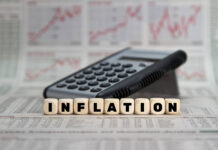Markets
US Treasuries quickly erased their kneejerk upleg following the US inflation numbers. They even went from outperforming Bunds to underperforming them. Yields eventually rose 3.9 to 9.6 bps. The US 2y yield bounced of 4.5% to finish at the highest level since the mid-March turmoil. German yields rallied 1.4-6 bps higher, the front underperforming as the 2y variant is nearing the symbolic 3% barrier again. It tested that level twice recently, back in April and end May. Equities had another good run, unhindered by the core bond yield intraday rebound. The EuroStoxx50 rose 0.7%, Wall Street finished 0.43-0.83% higher. The CPI release left no permanent traces on the USD. The greenback traded volatile but in the end simply held on to the losses incurred prior to the publication. EUR/USD tested the 1.08 big figure but was unable to close above it. The trade-weighted index eased towards 103.338. The constructive risk sentiment and core bond yield advance delivered a double blow to the Japanese yen. USD/JPY topped 140 again while EUR/JPY’s closing level (151.34) was a new 15-year high. Sterling strengthened towards critical EUR/GBP support at 0.8547. The red hot labour market report and its implications for monetary policy (see below) supported the move higher. Industrial production figures this morning were slightly disappointing but the monthly GDP figure and services sector growth were bang in line with expectations. It’s enough for a small sterling push towards the 0.8547 support. Scandinavian currencies were on top of the G10 scoreboard. The Swedish crown surged almost 2% to EUR/SEK 11.53 – though still weak from a historical perspective it does leave the recent post-GFC lows a bit further behind. Swedish May inflation (6.7% CPIF, 8.2% core CPIF) followed the Norwegian example last week by beating consensus that was already revised higher. SEK ekes out further gains.
It’s Fed day. Yesterday’s more or less in-line CPI figures basically cemented the case for a skip in the tightening cycle. That said, we do expect the Fed to add a hawkish flavour because of – amongst others – ongoing economic resilience, especially in the labour market and stalling/insufficient progress in the core disinflationary process. The dot plot serves as the perfect tool for this. The updated version will include a higher terminal rate than the one in March (set back then at the current 5-5.25%). 2024 may also see a higher rate level than expected previously. We don’t expect chair Powell to sound outright hawkish in the press conference afterwards though. He’ll stick to a data-dependent approach instead. With another rate hike almost fully priced in for either July or September, we think the dollar’s room for appreciation against the euro is limited. First EUR/USD support is located at 1.0727/1.0735. The US yield rally may lose some steam but their downside should be protected by the higher-for-longer strategy.
News and views
Bank of England governor Bailey extended yesterday’s UK Gilt sell-off by commenting on hot UK labour market report, including accelerating wages, published in the morning: “We’ve got a very tight labour market. We still think inflation is going to come down, but it’s taking a lot longer than we expected”. Megan Greene, who’ll replace dovish BoE member Tenreyro (recently voted against rate hikes) by the time of the August meeting, added that second-round effects seem to be seeping in. She added: “I think there is some underlying persistence and so getting from 10% to 5% is probably far easier than getting from 5% to 2%. UK gilt yields eventually surged up to 26 bps for the 2y tenor which easily surpassed last year’s peak to close at 4.9%, the highest level since 2008. UK money markets now raised their expectations for the policy rate peak (currently 4.5%) from 5.5% to (at least) 5.75% by the end of the year. Sterling gains remained contained despite the yield advantage, possibly as the implication of very hawkish BoE policy stance could be a recession next year.
Bloomberg yesterday evening reported that the US, according to sources, plans to purchase about 12 million barrels of oil this year as it begins to refill its depleted emergency reserve. This includes 3 million scheduled for delivery in August and 3 million from a solicitation issued on Friday. The acceleration comes as WTI crude prices arrived at the $67-72/b range, mentioned last fall as target zone. The country’s Strategic Petroleum Reserve fell from around 593 million barrels at the start of 2022 to about 372 million at the end of last year. The SPR has a 700 million barrel capacity.













